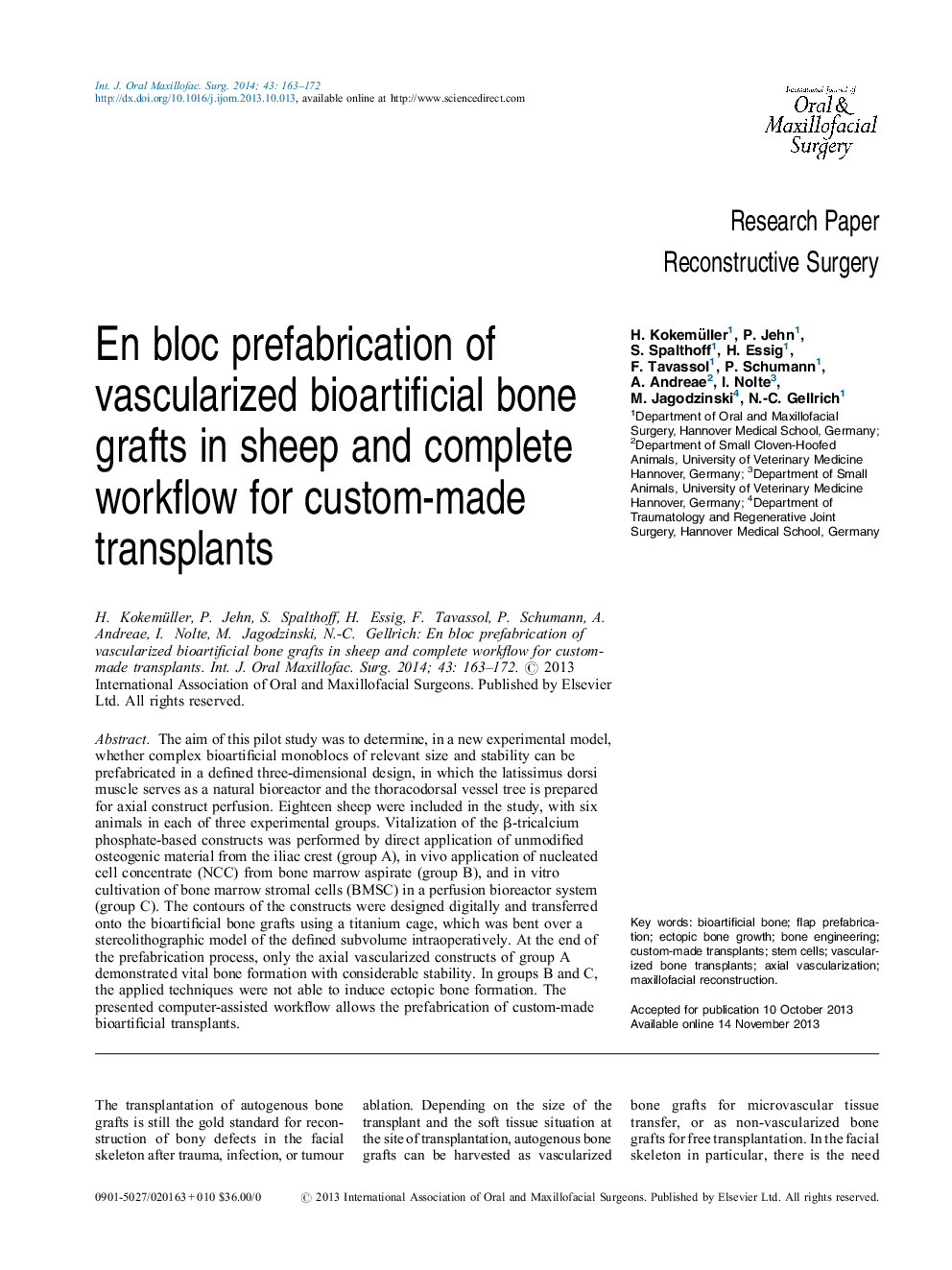| Article ID | Journal | Published Year | Pages | File Type |
|---|---|---|---|---|
| 3132455 | International Journal of Oral and Maxillofacial Surgery | 2014 | 10 Pages |
The aim of this pilot study was to determine, in a new experimental model, whether complex bioartificial monoblocs of relevant size and stability can be prefabricated in a defined three-dimensional design, in which the latissimus dorsi muscle serves as a natural bioreactor and the thoracodorsal vessel tree is prepared for axial construct perfusion. Eighteen sheep were included in the study, with six animals in each of three experimental groups. Vitalization of the β-tricalcium phosphate-based constructs was performed by direct application of unmodified osteogenic material from the iliac crest (group A), in vivo application of nucleated cell concentrate (NCC) from bone marrow aspirate (group B), and in vitro cultivation of bone marrow stromal cells (BMSC) in a perfusion bioreactor system (group C). The contours of the constructs were designed digitally and transferred onto the bioartificial bone grafts using a titanium cage, which was bent over a stereolithographic model of the defined subvolume intraoperatively. At the end of the prefabrication process, only the axial vascularized constructs of group A demonstrated vital bone formation with considerable stability. In groups B and C, the applied techniques were not able to induce ectopic bone formation. The presented computer-assisted workflow allows the prefabrication of custom-made bioartificial transplants.
